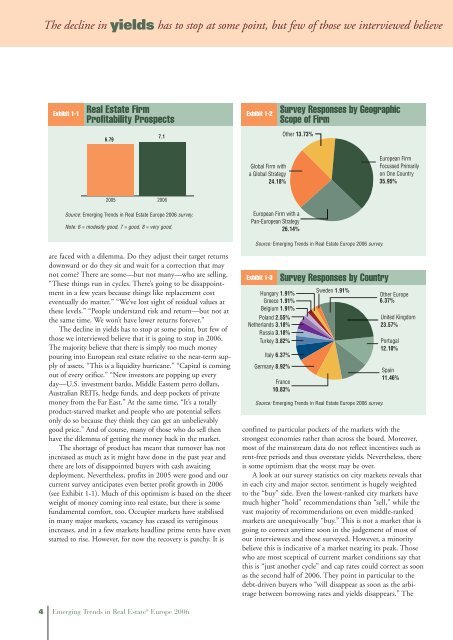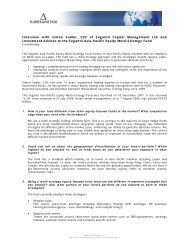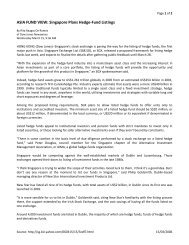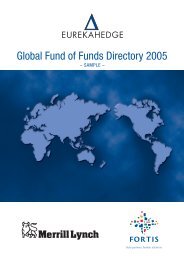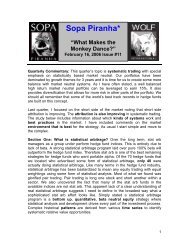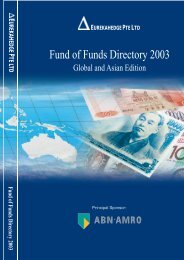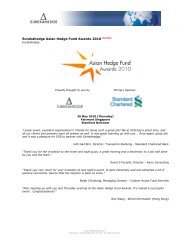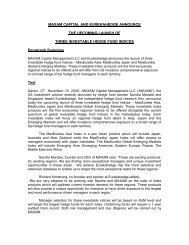Emerging Trends in Real Estate® Europe 2006 - Urban Land Institute
Emerging Trends in Real Estate® Europe 2006 - Urban Land Institute
Emerging Trends in Real Estate® Europe 2006 - Urban Land Institute
You also want an ePaper? Increase the reach of your titles
YUMPU automatically turns print PDFs into web optimized ePapers that Google loves.
The decl<strong>in</strong>e <strong>in</strong> yields has to stop at some po<strong>in</strong>t, but few of those we <strong>in</strong>terviewed believe<br />
Exhibit 1-1<br />
<strong>Real</strong> Estate Firm<br />
Profitability Prospects<br />
6.79<br />
2005 <strong>2006</strong><br />
Source: <strong>Emerg<strong>in</strong>g</strong> <strong>Trends</strong> <strong>in</strong> <strong>Real</strong> Estate <strong>Europe</strong> <strong>2006</strong> survey.<br />
are faced with a dilemma. Do they adjust their target returns<br />
downward or do they sit and wait for a correction that may<br />
not come? There are some—but not many—who are sell<strong>in</strong>g.<br />
“These th<strong>in</strong>gs run <strong>in</strong> cycles. There’s go<strong>in</strong>g to be disappo<strong>in</strong>tment<br />
<strong>in</strong> a few years because th<strong>in</strong>gs like replacement cost<br />
eventually do matter.” “We’ve lost sight of residual values at<br />
these levels.” “People understand risk and return—but not at<br />
the same time. We won’t have lower returns forever.”<br />
The decl<strong>in</strong>e <strong>in</strong> yields has to stop at some po<strong>in</strong>t, but few of<br />
those we <strong>in</strong>terviewed believe that it is go<strong>in</strong>g to stop <strong>in</strong> <strong>2006</strong>.<br />
The majority believe that there is simply too much money<br />
pour<strong>in</strong>g <strong>in</strong>to <strong>Europe</strong>an real estate relative to the near-term supply<br />
of assets. “This is a liquidity hurricane.” “Capital is com<strong>in</strong>g<br />
out of every orifice.” “New <strong>in</strong>vestors are popp<strong>in</strong>g up every<br />
day—U.S. <strong>in</strong>vestment banks, Middle Eastern petro dollars,<br />
Australian REITs, hedge funds, and deep pockets of private<br />
money from the Far East.” At the same time, “It’s a totally<br />
product-starved market and people who are potential sellers<br />
only do so because they th<strong>in</strong>k they can get an unbelievably<br />
good price.” And of course, many of those who do sell then<br />
have the dilemma of gett<strong>in</strong>g the money back <strong>in</strong> the market.<br />
The shortage of product has meant that turnover has not<br />
<strong>in</strong>creased as much as it might have done <strong>in</strong> the past year and<br />
there are lots of disappo<strong>in</strong>ted buyers with cash await<strong>in</strong>g<br />
deployment. Nevertheless, profits <strong>in</strong> 2005 were good and our<br />
current survey anticipates even better profit growth <strong>in</strong> <strong>2006</strong><br />
(see Exhibit 1-1). Much of this optimism is based on the sheer<br />
weight of money com<strong>in</strong>g <strong>in</strong>to real estate, but there is some<br />
fundamental comfort, too. Occupier markets have stabilised<br />
<strong>in</strong> many major markets, vacancy has ceased its vertig<strong>in</strong>ous<br />
<strong>in</strong>creases, and <strong>in</strong> a few markets headl<strong>in</strong>e prime rents have even<br />
started to rise. However, for now the recovery is patchy. It is<br />
4 <strong>Emerg<strong>in</strong>g</strong> <strong>Trends</strong> <strong>in</strong> <strong>Real</strong> Estate ® <strong>Europe</strong> <strong>2006</strong><br />
7.1<br />
Note: 6 = modestly good, 7 = good, 8 = very good.<br />
Exhibit 1-2<br />
Global Firm with<br />
a Global Strategy<br />
24.18%<br />
<strong>Europe</strong>an Firm with a<br />
Pan-<strong>Europe</strong>an Strategy<br />
26.14%<br />
Survey Responses by Geographic<br />
Scope of Firm<br />
Other 13.73%<br />
Source: <strong>Emerg<strong>in</strong>g</strong> <strong>Trends</strong> <strong>in</strong> <strong>Real</strong> Estate <strong>Europe</strong> <strong>2006</strong> survey.<br />
Exhibit 1-3 Survey Responses by Country<br />
Source: <strong>Emerg<strong>in</strong>g</strong> <strong>Trends</strong> <strong>in</strong> <strong>Real</strong> Estate <strong>Europe</strong> <strong>2006</strong> survey.<br />
<strong>Europe</strong>an Firm<br />
Focussed Primarily<br />
on One Country<br />
35.95%<br />
Hungary 1.91%<br />
Greece 1.91%<br />
Belgium 1.91%<br />
Sweden 1.91%<br />
Other <strong>Europe</strong><br />
6.37%<br />
Poland 2.55%<br />
Netherlands 3.18%<br />
Russia 3.18%<br />
Turkey 3.82%<br />
Italy 6.37%<br />
Germany 8.92%<br />
France<br />
10.83%<br />
United K<strong>in</strong>gdom<br />
23.57%<br />
Portugal<br />
12.10%<br />
Spa<strong>in</strong><br />
11.46%<br />
conf<strong>in</strong>ed to particular pockets of the markets with the<br />
strongest economies rather than across the board. Moreover,<br />
most of the ma<strong>in</strong>stream data do not reflect <strong>in</strong>centives such as<br />
rent-free periods and thus overstate yields. Nevertheless, there<br />
is some optimism that the worst may be over.<br />
A look at our survey statistics on city markets reveals that<br />
<strong>in</strong> each city and major sector, sentiment is hugely weighted<br />
to the “buy” side. Even the lowest-ranked city markets have<br />
much higher “hold” recommendations than “sell,” while the<br />
vast majority of recommendations on even middle-ranked<br />
markets are unequivocally “buy.” This is not a market that is<br />
go<strong>in</strong>g to correct anytime soon <strong>in</strong> the judgement of most of<br />
our <strong>in</strong>terviewees and those surveyed. However, a m<strong>in</strong>ority<br />
believe this is <strong>in</strong>dicative of a market near<strong>in</strong>g its peak. Those<br />
who are most sceptical of current market conditions say that<br />
this is “just another cycle” and cap rates could correct as soon<br />
as the second half of <strong>2006</strong>. They po<strong>in</strong>t <strong>in</strong> particular to the<br />
debt-driven buyers who “will disappear as soon as the arbitrage<br />
between borrow<strong>in</strong>g rates and yields disappears.” The


